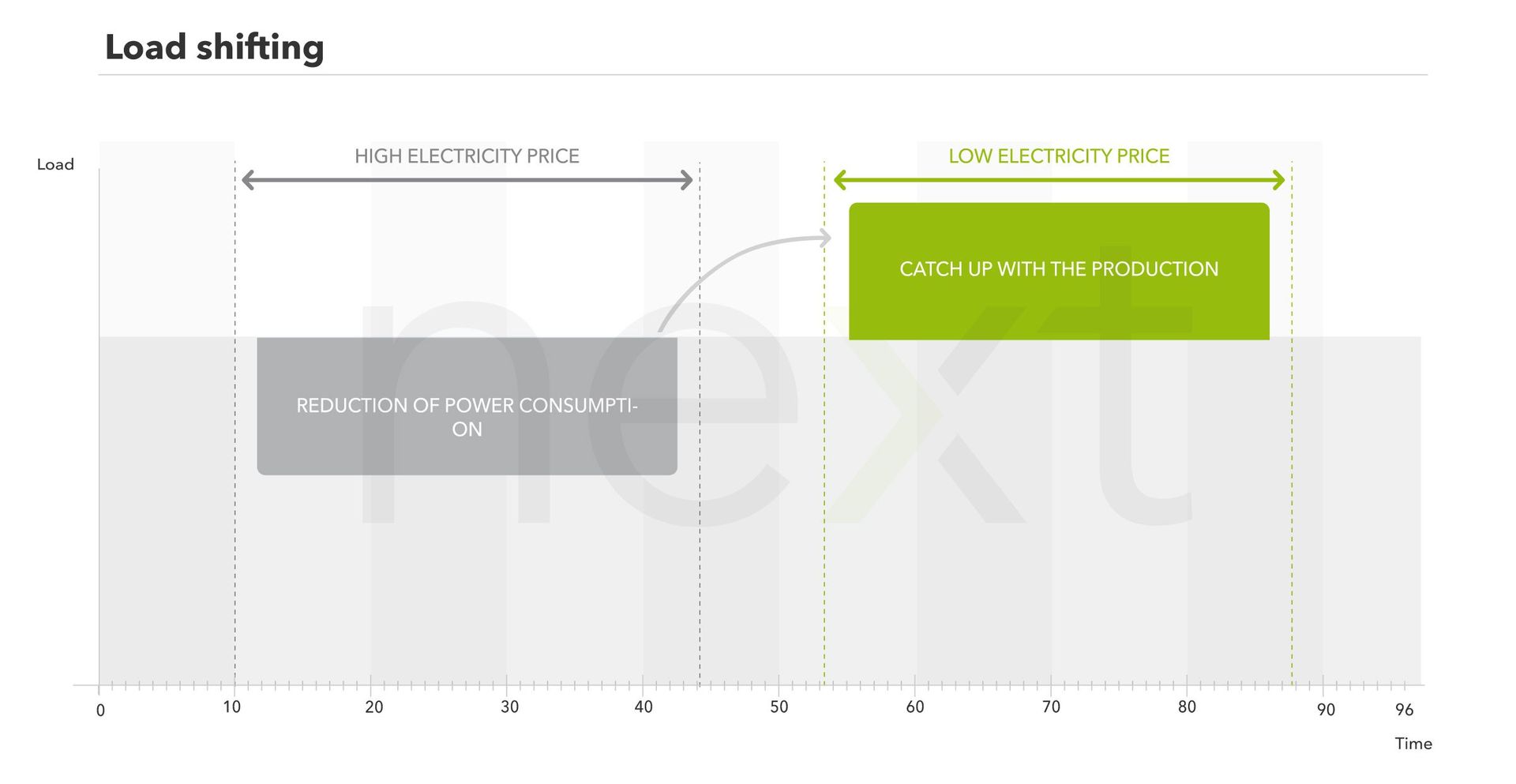What is load management?
Definition
Electricity consumption is often referred to as ‘load’ in the energy industry. Load management is the active control of electricity consumption. It is also known as ‘demand side management’ or ‘DSM'. Often, it refers to controlling electricity consumption based on financial signals from the electricity market. Load management is an important part of the concept of a smart grid, whereby existing infrastructure is equipped with intelligent monitoring and control technologies. The result is a network of active and reactive loads. There are differences between load shifting, load reduction, flexible load, and load expansive control measures. The following article addresses load shifting and load reduction (or load shedding) in more detail.
Load shifting
As a flexible control measure, load shifting is mostly found in industrial processes. Essentially, it refers to scaling load up or down according to external pricing signals. Power consumption during peak load periods – times during the day when demand for electricity is high and the price expensive – is shifted to periods of lower demand and lower prices. In contrast to load shedding, load shifting does not result in less electricity consumption than originally planned. The only change is that the electricity is consumed at a different time. By shifting the load, the load profiles of electricity consumers often align with volatile power production at renewable energy plants: the low production costs of these assets (wind power, photovoltaics) cause lower prices on the electricity exchange.
Load shifting can significantly reduce a company’s energy costs. This form of load management is still new and requires power consuming companies to shift their approach, both technically and intellectually, since processes that require power are given a new operating parameter: the price of electricity. The Take your Time and Best of 96 tariffs developed by Next Kraftwerke are two ways to implement this concept.
For load shifting to be used properly, certain conditions should be met to allow for flexible consumption. The following processes make good use of load shifting:
- Grinding or pressing processes
- Large compressors (such as air) or feed pumps (such as water)
- Thermal or mechanical treatment / processing of materials
- Flexible, intermediate, or final material storage
- Refrigeration, heating, or drying processes
- Data centers
- Energy management or control systems for process control

Load shedding
Another aspect of load management involves the targeted reduction of total electricity consumption. Companies that operate with a constant load profile would simply scale down production, which would not be compensated in this scenario. However, companies with discontinuous operations can make up for decreased production caused by load shedding at a later time.
Internal load shedding refers to preventive or direct measures involving technical faults or malfunctions. This is done to protect a load consuming process against excessive wear or overheating.
Utility frequency measures / ancillary services
Utility frequency measures can be considered external load shedding. Industrial power consumers are well-suited for this: by providing ancillary services such as utility frequency control, they are selling the flexibility of their loads at a profit. Continuous electricity consumption is helpful for providing utility frequency control because shifting parts of the load is easier and more predictable. Furthermore, if an electricity-consuming process involves materials that can be stored (such as grain in a silo), production delays can be minimized.
Many markets for ancillary services offer additional profit incentives for load shifts, although profits vary based on the complexity of the ancillary product. Since a commercial process is halted or reduced during the time the load is being used to stabilize the grid, production is picked up at a later point.
More to read
Controlled brownout
Load shedding can also be initiated by transmission system operators (TSOs). This is a targeted measure known as a controlled brownout. Entire districts can be taken off the grid in an emergency to prevent a more widespread power failure.
Beneficial effects
Load management is useful for several reasons. Grid operators benefit by using large-scale power consumers to help level out frequency deviations. Companies can reduce their energy costs, and providing balancing energy can even turn a profit. In the long term, active load control is an important contribution to the efficient integration of renewable energies.
Disclaimer: Next Kraftwerke does not take any responsibility for the completeness, accuracy and actuality of the information provided. This article is for information purposes only and does not replace individual legal advice.


